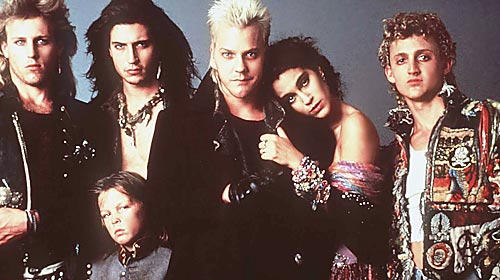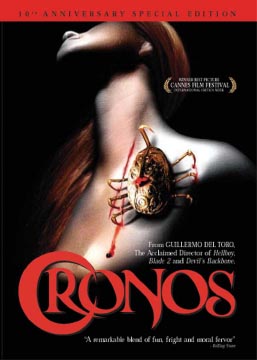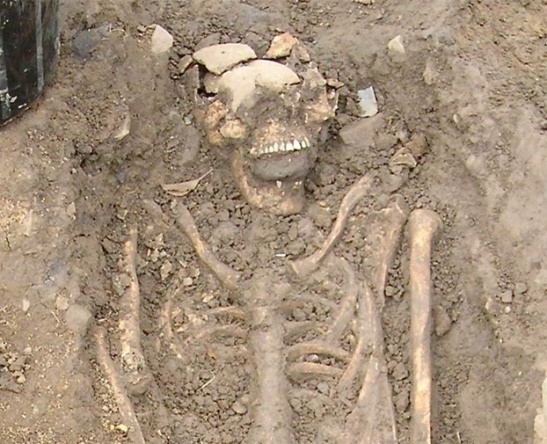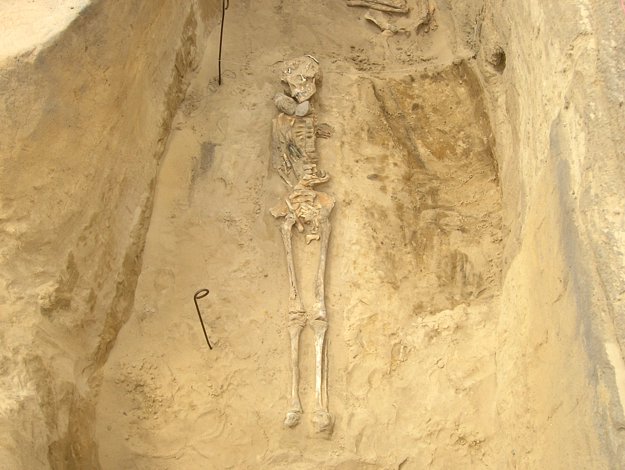

Essential Bygone Vampire MoviesThe essence of bygone vampire movies were propagated by stories told by gypsies and reports made by local doctors in Serbia. Particularly interesting are the medical reports documented by Dr. Johannes Flückinger in 1732 who was sent to a small village to report on the findings of 13 vampires discovered in the local cemetery.According to his official report, “fresh blood seeped from …the gaping wounds in their chests were the stakes had been pounded in.” If a respected doctor today was to make such a report, he’d be tested for hallucinogenic substances. And, it is worth saying that the good Dr. Flückinger was very well respected. According to Gypsy or Romani tradition, the only way to deal with “dead” vampires – those who had been killed with a wooden stake to the heart – was to follow that up by cutting off the head, burning the body and head into ashes and tossing the whole lot in the rapids of the river. It was these stories that Bram Stoker, who happens to be Irish even though he owned a castle in Transylvania, heard and used as his inspiration for what has become the vampire tale of all vampire tales ever told. Dracula spawned many tales of its own and when the movie was made, more tales erupted around the globe. Nosferatu (1922) There aren’t many movies made in 1922 that still hold the interest of pop culture in 2014 but Nosferatuhas managed to retain fans even though it is a silent movie.
There aren’t many movies made in 1922 that still hold the interest of pop culture in 2014 but Nosferatuhas managed to retain fans even though it is a silent movie. The German filmmaker had tried in vain to get the movie rights to the book [Dracula] and finally made an unauthorized version of the tale under the name Nosferatu. According to critics, this is the scariest of the Dracula depiction. The main character is not the prissy, pampered count of the Bela Lugosi style at all. He is the rodent like land owner who looks more like his fellow peasant residents – slightly dirty, disheveled and bug-eyed from lack of nutrition. The performance of Max Schreck who has taken his place in the archives of famous actors has been described by many as “animalistic”. Overall, there is nothing charming or romantic about this character’s demeanor, at all. The silent movie is now available online if you want to see it. In the 1920s of Germany and Eastern Europe as a whole, social disruptions and fear of what the future would hold for what was the middle class, Nosferatu provided a way to face fears of the unknown in such a way that made people believe that hope still existed for their real life. They could comfort there soul with the fact that at least, they weren’t being eaten by vampires. Dracula (1931) In the meantime, Universal Studios in Los Angeles acquired the much sought after and highly prized movie rights to the Stoker book and the stage play rights releasing their version of Dracula in 1931.
In the meantime, Universal Studios in Los Angeles acquired the much sought after and highly prized movie rights to the Stoker book and the stage play rights releasing their version of Dracula in 1931. Their choice for the Count was Bela Lugosi and the castle was smartly decorated for a wealthy, charming man who just happened to be a vampire. For a world just plunged into economic disaster of the Great Depression two years earlier, the elegant Count, who epitomizes a tragic love affair that could never be rewarded, was a fantastic indulgence into fantasy when it was needed the most. Curiously, when bygone vampire movies raise the question of who played Dracula, fans answer Bela Lugosi but in reality, Mr. Lugosi played the leading role in two of the six sequels that followed. Lon Chaney Jr. became the embodiment of the famous Count for the balance. The Fearless Vampire Killers (1967) During the 1960s and 70s, there was a rash of comedic vampires – something that Dr. Flückinger was unfamiliar with.
During the 1960s and 70s, there was a rash of comedic vampires – something that Dr. Flückinger was unfamiliar with. The Fearless Vampire Killers was one of total nonsense and slapstick that was popular entertainment back then. The bat scientist-researcher and his loyal sidekick assistant decide to go to Transylvania in search of if vampires are real. The movie was directed by Roman Polanski just before he married Mia Farrow. If you want a tongue-in-cheek experience give this one a quick look! The Lost Boys (1987) The Lost Boys came out in 1987, introducing the teenage vampires to the world. Until then, vampires were all grown up. Oddly the only actor in this film that eventually reached major heights of stardom was Kiefer Sutherland.
The Lost Boys came out in 1987, introducing the teenage vampires to the world. Until then, vampires were all grown up. Oddly the only actor in this film that eventually reached major heights of stardom was Kiefer Sutherland. The film itself wasn’t really all that good but it was a light-hearted version of vampirism as the teenagers ride motorcycles around Santa Cruz and Capitola Beach in northern California. It was a movie reflecting its time and the lack of seriousness that permeated the country in general. There were no wars or economic collapses to be concerned about. The civil rights marches were over and there were no real problems to solve or people to save. So, The Lost Boys filled the gap with make-believe murders in the quietest place on the West Coast. Essential Vampire Hits of the 90sWhile teenage vampires and light-hearted ghouls made their way to the small screen (television), more serious and complex plots and schemes were imprinting themselves on the large screens.Cronos (1993) Vampires were crossing the southern U.S. border – probably at night when the crossing guards were too tired to be bothered with trivial legal matters and one of the most fascinating results was the movie Cronos.
Vampires were crossing the southern U.S. border – probably at night when the crossing guards were too tired to be bothered with trivial legal matters and one of the most fascinating results was the movie Cronos.This is one of the only movies which features a mechanical device as the implement for sucking blood for its owner-partner-finder – as the case may be. Although it may sound trivial here, the truth is it is a highly complex, well written, imaginative piece of work that deserves an abundance of accolades. This is one of the films that launched Ron Perlman’s career as an actor in video games. Starting as the voice of Clayface in the Adventures of Batman and Robin, Perlman has completed 26 video games so far. Interview with the Vampire (1994) There is no possible way to discuss bygone vampire movies without adding the Tom Cruise, Antonio Banderas and Brad Pitt movie Interview with the Vampire to the list.
There is no possible way to discuss bygone vampire movies without adding the Tom Cruise, Antonio Banderas and Brad Pitt movie Interview with the Vampire to the list. Take a highly competitive newspaper reporter who is in desperate need of a story in order to keep his job add in a young man who claims to be born in the 1730s, a man who professes to be a vampire and a girl in need of being rescued. Now, all you need is a jealous lover who is also a vampire. Give the plot some adventures in glamourous places and demands for vampire loyalty and – voila! You have a vampire movie ready for the making. Let’s call our movie “Interview with a Vampire” utilizing the disbelief of the reporter who is simply mesmerized by the storyline and sit back waiting for the Oscar nominations and a Golden Globe Award (or two) to dignify our millions of bucks in revenue. The Wrap Up or Vampires Survive Before there were books and movies and video games, there were folktales repeated and recorded by the educated and uneducated equally.
Before there were books and movies and video games, there were folktales repeated and recorded by the educated and uneducated equally. You might wonder, though, if the claims that real people actually believed in real vampires is true. The skeleton here is from the middle ages in Ireland where Vampires were buried with stones in their mouths so they couldn’t breathe or bite. In 2009, scholars went to Drawsko – a town in Serbia – with the question of whether the folk tales were actually believed or if they were stories told to keep children in line. Below is the grave of a skeleton from the 1700s where this person was determined to be a vampire and heavy rocks were placed on the neck to keep the evil one from crawling out of the grave.   |